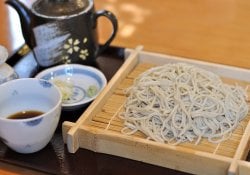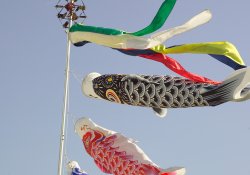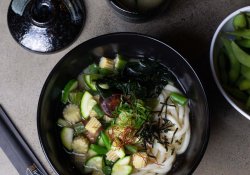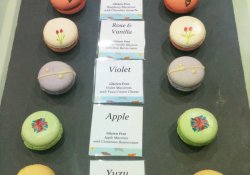Three-color dango Recipes and curiosities
On this page you will learn the recipe and some information about the Japanese dish Three-color dango Also known as Sanshoku Dango.
Table of Content - About - Origin - Information - Ingredients - Preparation - Related
All about Sanshoku Dango
Dango is a traditional Japanese dish, which consists of small balls of steamed rice served on a bamboo skewer. One of the most popular types of Dango is "Sanshoku dango," which is composed of three balls of different colors: white, pink, and green. The white ball is made with rice flour and water, and it is the most basic of the three. It is soft and slightly sweet, serving as the base for the other two balls. The pink ball is made with rice flour and Japanese plum juice, giving it a pink color and a sweet and sour taste. It is firmer than the white ball and has a unique and refreshing flavor. The green ball is made with rice flour and matcha, the famous Japanese powdered green tea. Besides giving color to the ball, matcha also gives it a bitter and earthy taste that contrasts with the other two balls, bringing a balance of flavors to the dish. Sanshoku dango is a very popular dish in Japan, commonly served as a dessert at festivals and celebrations. Additionally, it is enjoyed as a quick and light snack, found in convenience stores and markets. In addition to its attractive appearance and delicious taste, Dango is also a very versatile dish, as it can be paired with different sauces and toppings. Some common sauces include soy sauce and mitarashi (a sweet and sour sauce made with soy sauce and sugar). Toppings can vary from fruits to nuts and even ice cream. Although considered a dessert, Sanshoku dango can be consumed at any time of the day, being a light and healthy option for those looking for an alternative to traditional sweets. Moreover, as it is mainly made of rice, it is a source of complex carbohydrates, providing energy and satiety to the body. In summary, Sanshoku dango is a typical Japanese dish that enchants not only for its colorful appearance but also for its balanced flavor and versatility. If you have the opportunity to try it, do not miss the chance to taste this delicious Japanese delicacy.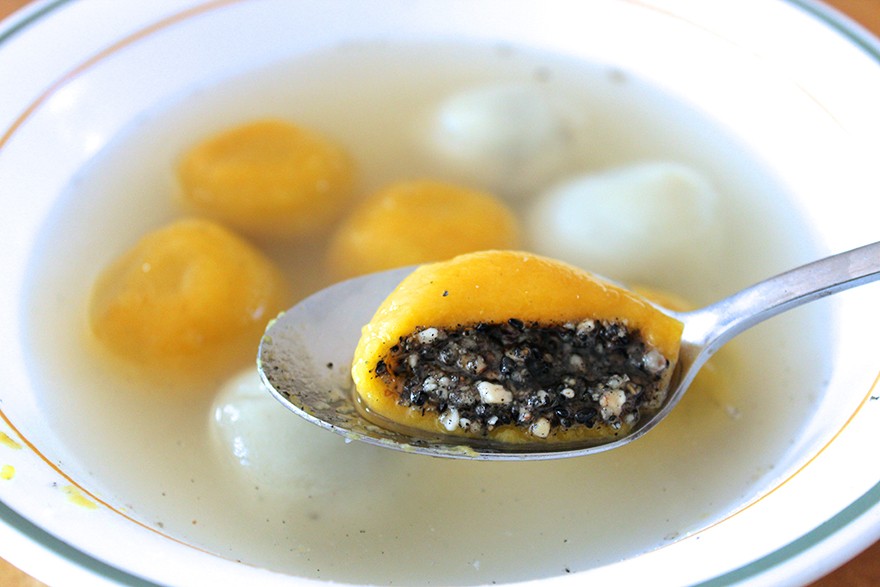
Origin and history of Sanshoku Dango
The dango are a traditional Japanese dish consisting of rice dumplings made with glutinous rice flour. They are known for their colorful appearance, usually in three different colors, which are green, pink, and white. The origin of dango dumplings dates back to the Heian period (794-1185) in Japan when they were offered as a tribute to the gods during seasonal festivals. Over time, they became a popular snack among the Japanese and are now consumed on various occasions, including festivals, ceremonies, and as a dessert. The three colors of the dango dumplings symbolize the three main gods of Shintoism: green for the god of the earth, pink for the god of the sun, and white for the god of the moon. In addition, the soft and sticky texture of dango is considered a symbol of good luck and prosperity.About the recipe
- Name of the plate: Three-color dango
- Name of the dish in English: Sanshoku Dango
- Name of the plate in Japanese: 三色だんご
- Name of the Romanian dish: Sanshoku Dango
Information about preparation
- Time to prepare: 10 minutes
- Time of Cooking: 10 minutes
- Difficulty: SIMPLE
- It suits: 3-4 people
- Occasions:
Ingredients – Ingredients
Check out the necessary and optional ingredients Three-color dangoIt makes sense to improvise
- 160g of non-glutinose rice flour Joshinko
- 40g of glutinous rice flour Shiratamako
- 60 g of sugar
- 200ml of hot water
- 1 teaspoon of matcha green tea powder
- Red food colour
- The Optional Ingredients:
- 1 tablespoon of coconut milk
- 1 tablespoon of butter
- 1 cup of vanilla essence
Watch a video of the recipe:
Recipes - How to Prepare
Now that you know the ingredients to make the recipe Three-color dango. Follow the instructions below in the preparation mode or step by step.
Preparation mode:
In a bowl, mix the non-glutinous rice flour, glutinous rice flour and sugar.
Add the hot water little by little, mixing well until the mass gets the consistency of an ear lob.
Cover the bowl and put it in the microwave for 3 minutes.
Using wet hands or a moistened pillow, love the pasta.
Divide the mass into thirds and add food dye to one third and matcha to another third.
Wrap the mass in uniform size balls for each color.
Spit a ball of each color in a bamboo spit and serve as a colorful sweet.
If the mass becomes brittle after heating, add a little more hot water until it becomes soft and elastic again.
Non-glutinous rice flour can be found in Asian product stores such as rice powder.

